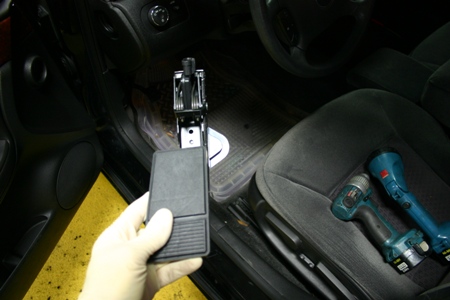Accelerator Pedal Position (APP) Sensor – Fly by Wire
December 18, 2010 11:44 am Check Engine Light, Chevrolet, DIY
The engine may intermittently jump, setting a DTC P2138 fault code.
© DenLorsTools.com Summary: In older cars accelerator pedals were linked to the carburetor by cable, my how times are changing! Now, many automobiles have the “fly by wire” set up. Instead of cable from the gas pedal, most new cars use computers and various components to make the car GO. This DenLors car repair article covers common fault codes like the P2138 which have to do with the electronic gas pedal used in many cars today. Read on to find out how the auto industry has mimicked the aircraft industry…
First a little history about FLY-BY-WIRE. Fly-by-wire (FBW) is a term originally associated with airplanes. With the use of electronics, potentiometers, actuators and computers, a fly-by-wire (FBW) system replaces mechanical control of airplanes. With the help of a computer, the movements of flight controls are converted into electronic signals which are translated into commands and sent to various actuators for controlling the plane. This is where the term fly-by-wire originated from. After the auto industry implemented similar systems, many auto technicians started using this term when referring to these type of controls for cars. Like many cars today, the steering in the 2008 Impala pictured above also has steering controlled with a fly-by-wire system. Electronic steering control is used instead of conventional power steering; instead of fluid, a power steering pump and a steering rack-n-pinion. Today we’re covering the throttle control, steering controlled by wire warrants an article all to itself!

A common problem with the Chevrolet Impala is the accelerator assembly.
Toyota has had the most problems with accelerator issues – at least in the public eye. Most of those issues have been recalled and addressed by Toyota. Employees at Toyota dealerships have been very busy fixing these problems. However, other makes of cars use similar systems and they have problems too. For instance Chevrolet, has a common Direct Trouble Code (DTC) P2138 that has to do with the Accelerator Pedal Position (APP) Sensor. The pedal position sensor comes with the gas pedal assembly. Any poor connection, be it from water entering connectors, frayed wires or otherwise corroded connections may cause a glitch in the signals traveling correctly to the computer and on to the throttle body. The pedal position sensor itself can wear since it is being moved back and forth every time the gas pedal is being pushed or released.
Chevrolet Trailblazers The result could be the car losing power unexpectedly or jerking upon acceleration. There may be TSBs covering specific models, so if you are experiencing a code related to the Accelerator Position or Correlation, it’s best to access an on-line repair manual to get the latest information. There could be specific info directing you to the problem area. Reduced Engine Power on some automobiles is displayed right on the dash. The last thing any driver wants is for their car to enter LIMP MODE while driving in heavy traffic. Some repair manuals have locations for body harness connectors that sometimes have water intrusion from sunroofs, or outside water like rain or from simply washing the car. Sometimes instrument panel to body connectors are the culprit.
Trailblazers are one of the models that may display a “Reduced Engine Power” message on the dash along with a CEL Check Engine Light. Some of the codes that could be scanned with a code reader or scan tool are : P0107, P0112, P0122, P0452, P1120, P1220, P1221, P1271, P1275, P1280, P1481, P1515, P1540, P1633, P1635, P1639, P1682. Again it’s best to reference an on-line repair manual since specific models may have the same codes as other automobiles but may have completely different problems.
Related Chevrolet Repair Articles and Tools
Chevrolet Repair Articles, Blogs
SPX Kent Moore Chevrolet Specialty Tools